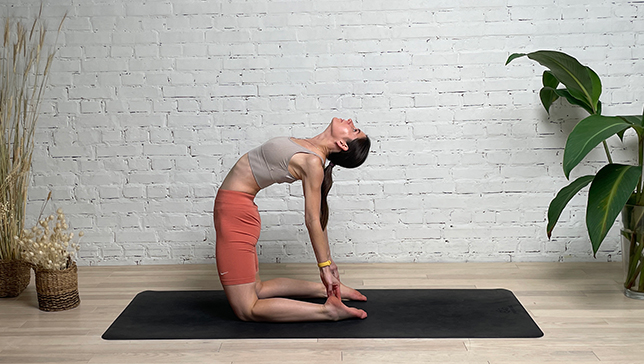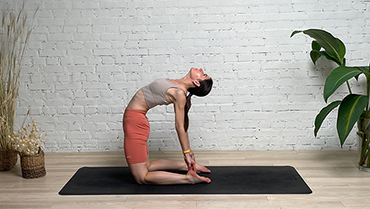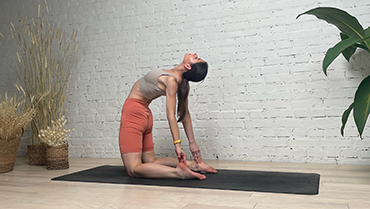Camel Pose - Ustrasana

Contents
Camel Pose or Ustrasana in Sanskrit (“Ustra” means Camel and “Asana” means Pose) is an intermediate-level chest-opening backbend that is energizing and beneficial. This yoga posture adds flexibility and strength to the body and also helps in improving digestion. It is a wonderful addition to your sequence since it prevents slouching and eases lower back stiffness.
Camel Pose stretches the front of the body including the chest, abdomen, and quadriceps. By doing a backbend, you are flexing it in the opposite direction and it may help you develop better posture. It is said to open the heart chakra, which is your energy center for love, caring, and compassion.
Pose Detail
- Body Position: Backbend Yoga Poses
- Difficulty: Beginners
- By Type: Chest Opening Yoga Poses, Flexibility Yoga Poses
- By Benefit: Yoga Poses For Digestion
Step-by-Step Instructions
Benefits and Contraindications
Can help build confidence and empowerment
Improves posture and counteracts the effects of prolonged sitting and doing computer work
May help relieve back pain
Can counteract slouching and kyphosis (abnormal curvature of the spine)
Stretches your abdomen, chest, shoulders, front of your hips (hip flexors), and front of your thighs (quadriceps)
Strengthens your back muscles, back of your thighs, and buttocks (glutes)
Improves digestion
High or low blood pressure, insomnia, or a migraine.
Low back or neck injury
Photo poses in different angles


Modifications, Props & Tips
You may place a block the long way in between your thighs (also highly recommended for Beginners). Keep squeezing into the block and trying to roll it to the back of the room. This will help to keep your legs engaged which will protect and support your spine.
You can also try this posture against the wall. Face the wall and press your thighs against the wall.
Frequently Asked Questions
Variations
- Camel Pose With Strap And Wall
- Kneeling Pose Hands Chair
- Half Camel Pose
- Sage Nahusha Pose
- Camel Pose Variation Unsupported Arms
Top Preparatory Poses
- Camel Pose Variation I
- Child Pose
- Bow Pose
Top Follow-Up Poses
- Child Pose
- Wide Child Pose
- Bridge Pose